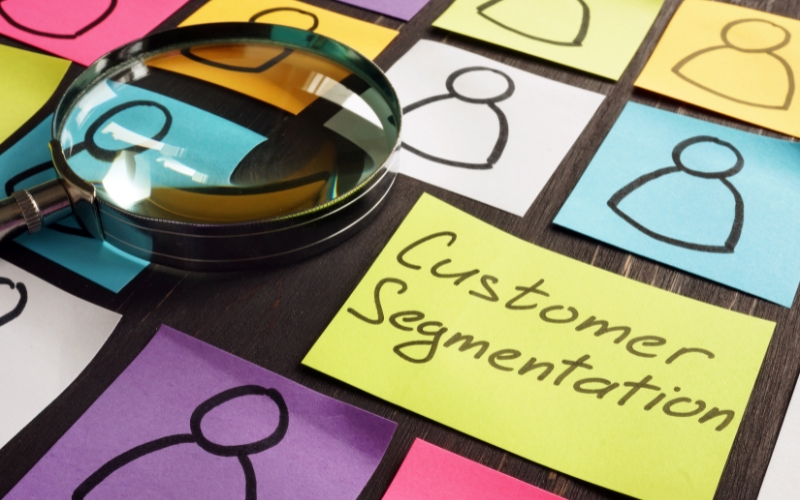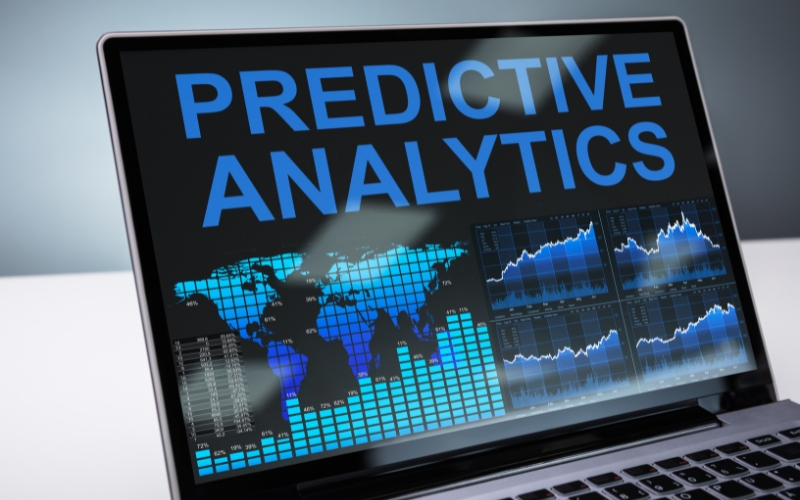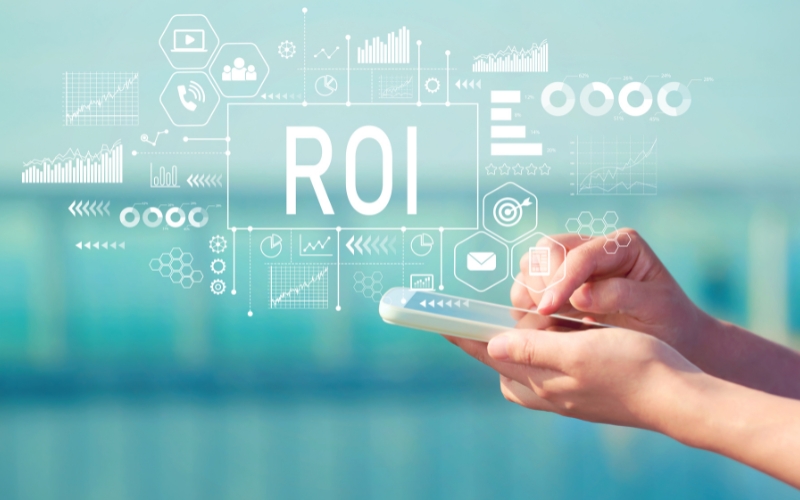
In today’s fast-paced digital environment, data analytics marketing has become an indispensable tool for businesses seeking to connect with customers in meaningful ways. Understanding customer behavior is at the core of developing successful marketing strategies, and data analytics provides the insights needed to achieve this. By harnessing data, businesses can personalize their messaging, target specific segments more effectively, and predict customer actions with greater accuracy. This article explores how data analytics marketing plays a critical role in understanding customer behavior, enhancing customer engagement, and optimizing marketing efforts for better results.
The Role of Data in Understanding Customer Behavior

In today’s competitive digital landscape, data analytics marketing plays a crucial role in shaping effective strategies that resonate with customers. By leveraging data, marketers can gain valuable insights into consumer preferences, buying patterns, and interactions across multiple touchpoints. This understanding forms the foundation for creating personalized marketing efforts that not only enhance customer engagement but also drive conversions and brand loyalty.
Data analytics marketing enables businesses to collect vast amounts of information, from browsing habits to transaction history, that reveal specific behaviors of individual customers. With this information, companies can segment their audience based on common characteristics, such as purchasing frequency, product preferences, and engagement levels. This segmentation allows marketers to tailor their content and offers to different customer groups, ensuring that each message resonates with the intended audience.
For instance, by analyzing past purchasing data, data analytics marketing can predict future buying behavior, which allows businesses to anticipate customer needs. If a customer frequently purchases skincare products, they might be more likely to respond positively to targeted promotions for related items like moisturizers or facial cleansers. This type of personalized marketing increases the likelihood of a sale by providing customers with relevant and timely offers.
Additionally, understanding customer behavior through data analytics marketing enables brands to refine their messaging and customer journey. By analyzing interaction data—such as email open rates, click-through rates, and social media engagements—marketers can optimize their messaging strategies to improve response rates. Data also helps to identify points in the customer journey where prospects are likely to drop off, allowing businesses to adjust their tactics and reduce churn.
Another significant advantage of data analytics marketing is the ability to monitor real-time customer behavior. Marketers can track how users are interacting with their website, what products they’re viewing, and where they spend the most time. With these insights, they can make instant adjustments to campaigns, ensuring that marketing efforts are always aligned with customer preferences.
Ultimately, data analytics marketing empowers businesses to make informed decisions, enhancing their ability to create highly personalized campaigns that speak directly to the needs and desires of their audience. As a result, companies can foster stronger relationships with customers, improve customer retention, and achieve better marketing outcomes.
Segmentation and Targeting: Using Data to Reach the Right Audience

In the realm of modern marketing, data analytics marketing is a game-changer when it comes to segmentation and targeting. By leveraging the power of data, marketers can identify and reach the right audience with precision, significantly improving campaign effectiveness and ROI. This process starts with the collection and analysis of vast amounts of customer data, which can be used to create distinct segments based on various characteristics such as demographics, behaviors, and interests.
One of the key benefits of data analytics marketing is its ability to segment audiences into smaller, more manageable groups. Traditional marketing methods often targeted broad, general audiences with one-size-fits-all messages. However, data-driven segmentation allows marketers to break down audiences into more specific categories, such as age groups, geographical locations, purchase history, or even engagement with previous campaigns. This enables companies to focus their resources on reaching high-potential customers who are most likely to respond positively to a given marketing message.
For example, if a retailer analyzes customer data and finds that a particular group of customers frequently buys athletic wear, the brand can create targeted campaigns specifically promoting new products in that category. This level of segmentation ensures that customers receive relevant content that speaks directly to their interests, making them more likely to engage with the campaign and ultimately convert.
Data analytics marketing also plays a significant role in refining targeting strategies. With the power of advanced analytics tools, marketers can identify key behaviors and preferences that help in further narrowing down their audience. By examining how customers interact with content, whether through clicks, likes, or shares, businesses can learn which types of campaigns resonate best with specific segments. This level of insight helps fine-tune advertising efforts, ensuring that the right message is delivered to the right people at the right time.
Moreover, segmentation allows businesses to allocate marketing budgets more efficiently. By identifying the most profitable customer segments, companies can direct their resources toward the high-value audience groups, ensuring better returns on investment. Data analytics marketing not only boosts campaign effectiveness but also enables brands to measure their targeting success in real-time, making it easier to adjust strategies as needed.
Predictive Analytics: Forecasting Campaign Success and Trends

In the rapidly evolving landscape of digital marketing, data analytics marketing plays a pivotal role in enabling businesses to stay ahead of the curve. One of the most powerful tools in this realm is predictive analytics, which leverages historical data, statistical algorithms, and machine learning techniques to forecast future trends, customer behaviors, and campaign outcomes. By harnessing the power of predictive analytics, marketers can make more informed decisions, optimize their strategies, and ensure that their campaigns resonate with the right audience at the right time.
Data analytics marketing has revolutionized the way businesses plan and execute campaigns by providing deep insights into future trends. With predictive analytics, marketers can analyze past data to recognize patterns and trends that might have otherwise gone unnoticed. These patterns, such as customer purchase cycles, seasonal behavior, and engagement rates, can help marketers predict which products, services, or messages are most likely to appeal to their target audience. By understanding these future trends, businesses can tailor their campaigns to better align with upcoming shifts in consumer demand, ensuring greater relevance and effectiveness.
Another key advantage of data analytics marketing through predictive models is the ability to forecast customer actions. Predictive analytics can identify which customers are most likely to make a purchase, engage with content, or even churn. By leveraging this insight, marketers can prioritize their efforts on high-potential customers, delivering personalized experiences and offers that increase the likelihood of conversion. For instance, if predictive analytics shows that a segment of customers is likely to purchase a specific product based on their previous behavior, marketers can push tailored promotions or advertisements to guide them through the buying process.
Additionally, data analytics marketing powered by predictive analytics allows businesses to optimize their campaigns in real time. By continuously analyzing the performance of ongoing campaigns, marketers can adjust strategies based on the anticipated outcomes, ensuring they stay on track to meet their goals. If certain elements of a campaign are predicted to underperform, marketers can pivot quickly to make adjustments, ultimately improving overall campaign efficiency and return on investment (ROI).
Real-Time Data: Optimizing Campaigns on the Fly

In the dynamic world of digital marketing, data analytics marketing is increasingly reliant on real-time data to drive decision-making and improve campaign performance. Real-time data analytics allows marketers to monitor and analyze campaign performance as it unfolds, enabling them to make immediate adjustments and ensure that their strategies remain effective and relevant to the current market conditions. The ability to optimize campaigns on the fly is a game-changer, ensuring that marketing efforts are always aligned with the latest customer behaviors and market trends.
One of the key advantages of data analytics marketing is the ability to track customer interactions and engagement in real time. Whether it’s monitoring website traffic, social media responses, email open rates, or click-through rates, marketers can gain a clear understanding of how their audience is reacting to specific campaigns. For example, if a social media ad is receiving a high level of engagement in a particular region, marketers can instantly allocate more resources to that area, amplifying the campaign’s reach and impact.
Moreover, real-time data empowers marketers to detect potential issues early. If a campaign isn’t performing as expected, data analytics marketing allows marketers to identify the problem areas—such as low engagement, high bounce rates, or unproductive ad spend—within minutes. This immediate feedback loop enables marketers to make necessary changes to the campaign, such as adjusting messaging, re-targeting audiences, or reallocating budget to better-performing ads. This proactive approach helps ensure that campaigns remain optimized, maximizing their effectiveness and minimizing wasted resources.
Additionally, data analytics marketing helps marketers stay aligned with market trends and external factors. In today’s fast-paced environment, consumer preferences and behaviors can shift rapidly, and what worked yesterday may not work today. Real-time data allows businesses to stay on top of these changes by providing up-to-the-minute insights. For instance, during a viral trend or unexpected event, marketers can pivot their campaigns quickly to capitalize on the moment, keeping their messaging relevant and timely.
Measuring ROI: Leveraging Data to Prove Campaign Effectiveness

In the world of digital marketing, data analytics marketing is essential for demonstrating the effectiveness of campaigns and proving the return on investment (ROI). Marketers are constantly tasked with ensuring that their campaigns not only generate engagement but also drive tangible business results. By using data analytics, businesses can measure key metrics such as customer acquisition costs, lifetime value, and overall campaign performance, providing clear insights into the success of their efforts.
One of the most critical aspects of data analytics marketing is tracking customer acquisition costs (CAC). This metric measures how much it costs to acquire a new customer through marketing efforts, whether it’s through paid ads, email campaigns, or social media outreach. By leveraging data analytics marketing, businesses can track the specific costs associated with each campaign and evaluate whether the customer acquisition cost is in line with their budget and goals. For example, if a campaign is generating a high volume of leads but the CAC is too high, marketers can use data to identify inefficiencies, such as targeting the wrong audience or overspending on certain channels. This insight allows for better resource allocation in future campaigns.
Another essential metric that data analytics marketing helps to measure is customer lifetime value (CLV). CLV represents the total revenue a business expects to earn from a customer throughout their relationship with the company. By analyzing historical data, businesses can predict the long-term value of a customer and determine which campaigns are most effective at generating loyal, high-value customers. For instance, if data shows that customers acquired through a particular marketing campaign have a high CLV, businesses can justify investing more in similar campaigns to boost long-term profitability.
Beyond CAC and CLV, data analytics marketing also allows for the measurement of overall campaign performance. By tracking a range of metrics, such as click-through rates, conversion rates, and engagement levels, marketers can gain a holistic view of how their campaigns are performing. With real-time data, businesses can evaluate how well their strategies are meeting specific goals and make adjustments where necessary. For example, if a campaign is underperforming, data analytics marketing can help identify which aspects of the campaign—such as ad copy, targeting, or timing—need optimization.
Conclusion:
To further enhance your understanding of how data analytics marketing can shape successful campaigns, you can explore a comprehensive guide on the topic from HubSpot’s blog on data analytics. This resource provides valuable insights into how marketers can leverage data for optimizing their strategies, driving higher engagement, and improving overall campaign performance. By utilizing the latest tools and techniques, businesses can take full advantage of data analytics to stay ahead in today’s competitive market.
In conclusion, data analytics marketing empowers businesses to make data-driven decisions that significantly enhance their ability to connect with customers and drive successful campaigns. By gaining deeper insights into customer behaviors, preferences, and buying patterns, businesses can tailor their marketing strategies to meet the needs of their audience more effectively. Whether it’s through segmentation, predictive analytics, or real-time monitoring, data analytics ensures that marketing efforts are always relevant, personalized, and impactful. As the digital landscape continues to evolve, leveraging data analytics marketing will be crucial for businesses looking to stay competitive and foster long-term customer relationships.
For more details or to discuss your specific Digital Marketing services, visit our Digital Marketing Services page.

